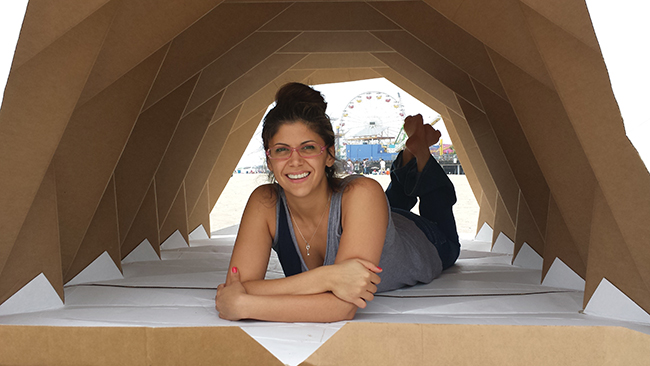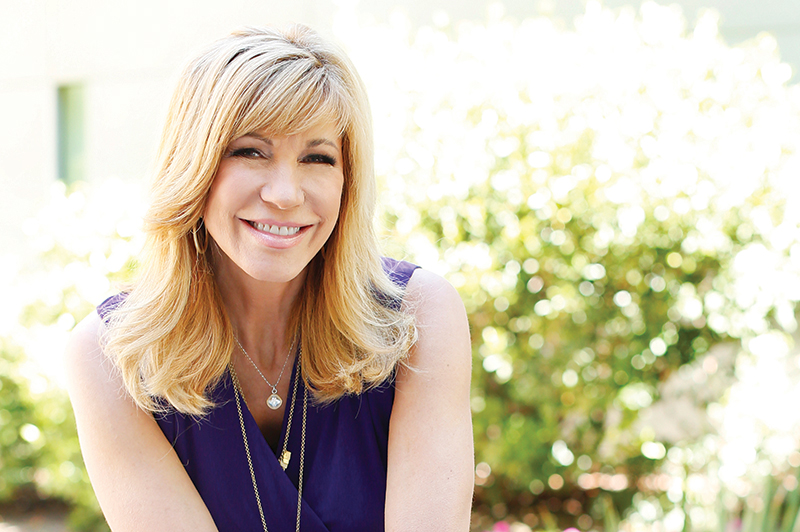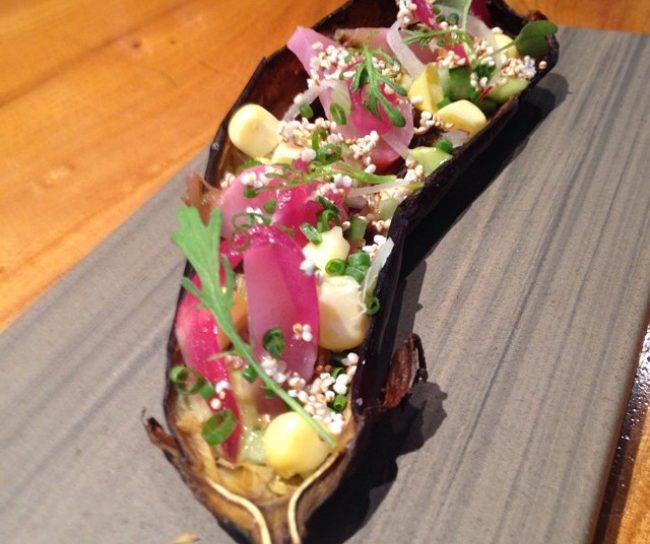
Architect for Change
The inspiring story of how Tina Hovsepian fused Buddhist beliefs, design skills and social consciousness to form the NoHo-based Cardborigami, which provides shelter and, ultimately, possibilities for the homeless.
-
CategoryPeople
-
Edited byLinda Grasso
What sparked the idea for Cardborigami?
Shortly after I began to practice Buddhism, I studied abroad with the USC School of Architecture in Southeast Asia. I almost abandoned Buddhism after visiting temples in Kyoto where priests collected money from tourists to see the temple, to do calligraphy for them and to sell souvenirs—while they wore Rolex watches and had their C-class Benzes parked out back.
I was also struck by how much poverty existed in the world, yet people were happy. In America we have such excess wealth, yet people are suffering. LA’s skid row resembles the same third-world countries I visited but is 10 times worse when juxtaposed to the wealth and prosperity a few short blocks away. I realized I wanted to use my skills and talents to help make a difference in the world and to focus on skid row.
So what happened when you got back to school?
I had the opportunity to redesign an Airstream trailer. What emerged was a unique, design-led answer to temporary shelter for the homeless—and by extension to emergency housing. According to the 2013 LAHSA count, there are approximately 58,000 living on the streets; barely one-fourth have some form of shelter available to them.

Have you always been a socially conscious person?
No, I grew up as the only child in my entire extended family … you can infer the rest. My initial exposure to the idea of social good was at USC. I had amazing and socially conscious professors who taught me about sustainability and global warming. I realized that the true essence of all these discussions was simply to preserve livelihood. When you think this way, social good and sustainability are one and the same.
How does Cardborigami work?
Due to the aesthetically pleasing, geometric design of the shelters, there’s been a lot of interest from people who purchase the shelters for recreational purposes. Cardborigami leverages this interest so it does not have to rely solely on donations and grants. Our current priority is to sell shelters to the general public in order to raise funds to implement our “4-step path” out of homelessness.
What are the steps?
Firstly, shelters will be used on private property in partnership with other nonprofits, creating an environment where people can sleep safely while also having access to services. We will help connect the homeless to training, job placement and other social services and help people seek and find permanent housing. And finally, we will hire people who have been through our program to do initial construction of shelters, essentially creating jobs to help support people after they’ve gotten off the streets.
What does it mean to you personally to be a social entrepreneur?
To me, social entrepreneurship is doing good and doing well. I strongly believe that we need to change the idea that it is okay to make a profit from other’s misfortune. Many of our major industries work this way and are not adequately regulated. The top earners in the world tend to leave the environment worse than before—from the financial crisis to oil and chemical spills—with little consequences!
Did you have a mentor?
Ron Schultz (also a Valley native), the founder and president of Entrepreneurs4Change. He works with green and social innovators, veterans and marginalized communities to provide entrepreneurial education and access to funding and capital.
I understand you have a day job.
I like to tell people I work on malls in a mall. I currently work at Callison, the top retail architecture firm in the world, located on the Third Street Promenade in Santa Monica. I’m an associate architect working on mixed-use developments.
What about your personal life?
I have a wonderful and supportive boyfriend, whom I sometimes force to fold cardboard.











